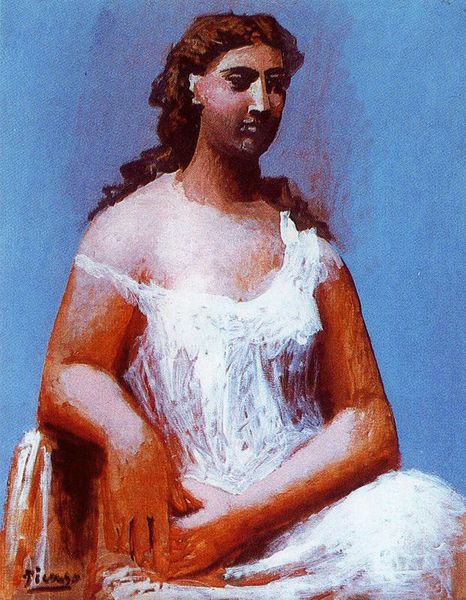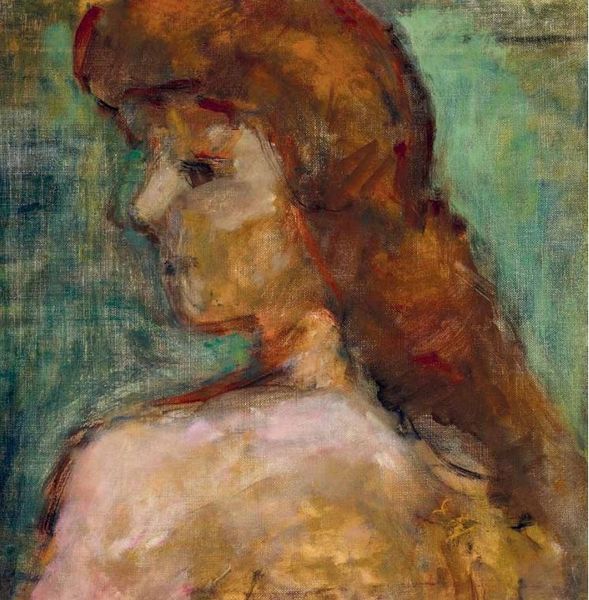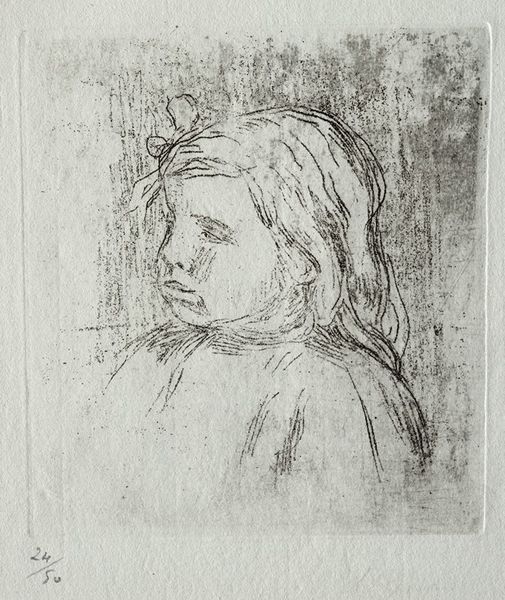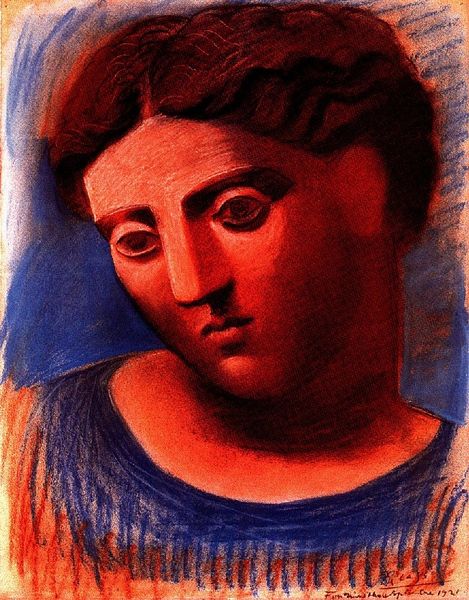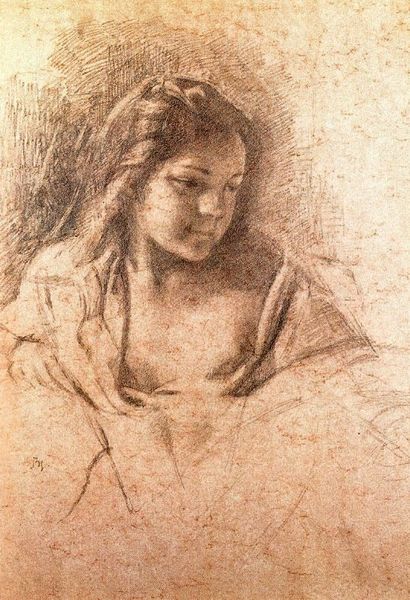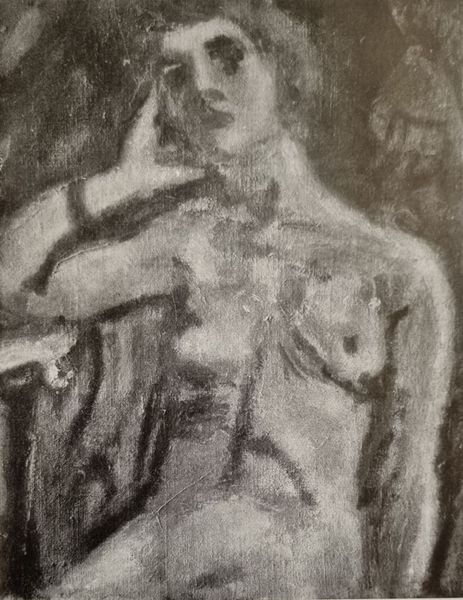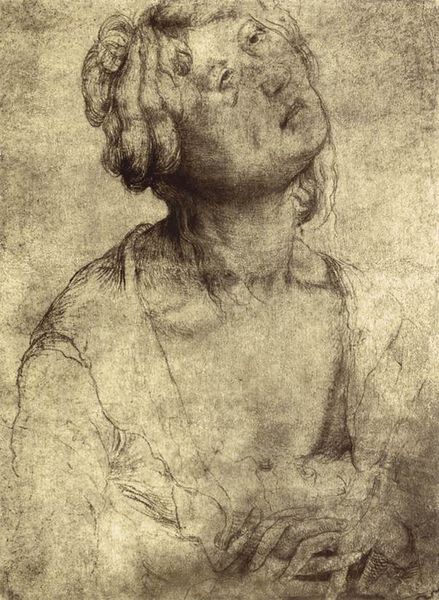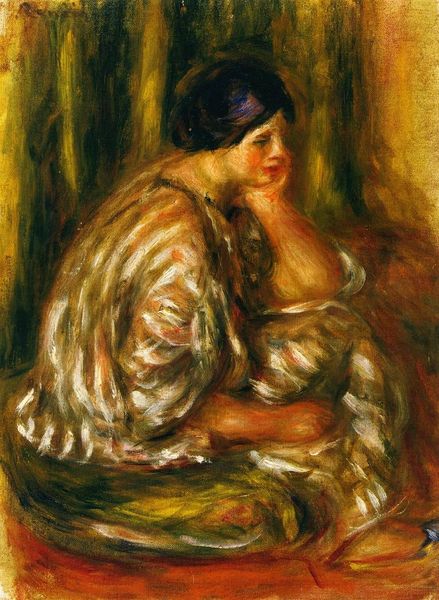
painting, watercolor
#
portrait
#
cubism
#
painting
#
figuration
#
oil painting
#
watercolor
#
modernism
Dimensions: 20.9 x 17.4 cm
Copyright: Pablo Picasso,Fair Use
Editor: We’re looking at Pablo Picasso’s “Seated Woman,” painted in 1923. It's a portrait, mostly watercolor and oil paint. What I notice right away is how the blending of colors seems almost unfinished, giving it a very raw and honest feel. What's your take on it? Curator: A crucial element here is the flattening of form. Notice how Picasso minimizes depth, emphasizing the planar aspects of the figure. The interlocking shapes and shifting perspectives serve not to represent reality, but to create an independent aesthetic structure. The ochre and blue, along with visible brushstrokes, animate the composition. Editor: So, you’re saying it's more about the arrangement of shapes and colors than a true depiction of a woman? Curator: Precisely. The subject serves primarily as a vehicle for exploring pictorial construction. Think of how Picasso fragments the human form. Does the anatomical accuracy even matter, or is it rather the orchestration of lines and tones that truly interests the viewer? Editor: I guess I was expecting something a bit more traditionally… portrait-like. I'm starting to see how the colors, especially how they bleed into each other, make it much more abstract. Curator: And the cubist deconstruction adds to the visual texture. Consider also the role of line: sharp, decisive lines juxtaposed with soft washes create visual tension, almost as if two artistic systems were colliding. This kind of deliberate disruption of traditional forms allows him to construct a powerful modern language. Editor: So, it's almost like the woman is less a subject and more a building block for something else entirely. I didn’t notice that at first! Curator: Indeed! Examining the underlying framework enables you to truly understand how the work achieves its impact. Editor: Okay, that helps a lot. Thanks for explaining it in that light!
Comments
No comments
Be the first to comment and join the conversation on the ultimate creative platform.
